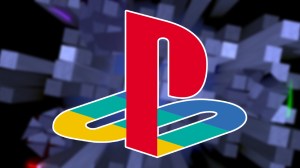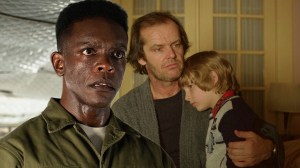Though comic readers in the present day and time can list some of their favorite colorists, the work itself of this important part of the comic book process remains somewhat unsung. In order to illuminate a bit on the means and techniques used while coloring a book, ComicBook.com got the change to speak with one of Valiant’s most prolific colorists, Andrew Dalhouse. Having previously worked with DC for years on titles like Justice League of America and Teen Titans, Dalhouse has worked with Valiant for years now, currently lending his talents to Dan Abnett’s outstanding Rai relaunch and the new Bloodshot from Tim Seeley.
Videos by ComicBook.com
We spoke with Dalhouse about what his work entails coloring these books along with some of our other favorites from his creative career. You can read our full talk below along with an exclusive preview from the upcoming Bloodshot #9 by Seeley with pencils by Marc Laming. Dalhouse’s work can be seen in Bloodshot #7 (Part 1 of “Burned”) currently on sale in comic stores and online, and in Rai #6 on sale on August 19.
ComicBook.com: I think there’s a misconception among some comic readers, though the tide has turned in recent years, about the role that a colorist plays in the process of making a book. What does a typical day for you look like when you’re getting started on a page?
Andrew Dalhouse: First thing I do is get a huge cup of coffee and then open emails from my editors or other members of the book. If it’s a project and I’m working with a new artist, I try and find out what they like and want with coloring on their art and try and tailor my style to fit their needs and the story.

CB: How much leeway are you given in the color selection process and how much of it is written or dictated specifically as being one particular color?
AD: I look over the script for color suggestions. Time of day, color of the sky, race of any new characters, etc. Other than those things I get free range to be creative and help fulfill the vision of the writer and artist.
CB: Would you say there is a big difference or little difference in coloring a cover versus a page with multiple panels versus a splash?
AD: There is a big difference. Your cover is competing with a lot of other covers on the rack. So you have to try and make it stand out. So things that you would typically do on interiors you wouldn’t do on a cover. Covers need to be brighter and more colorful. No overly dark coloring on characters and bright saturated backgrounds. You need to catch someone’s eye who is browsing the rack.

CB: This one probably boils down to pure collaboration, but when you’re working with a scene that is pure dialogue and exposition in a series, what are the tricks that you as a colorist can do to make the art continue to pop and be exciting for a reader?
AD: I play with the lighting on the faces and background colors to convey emotions. I rely on the dialogue a lot for scenes like this. The artist a lot of times will mix things up also to make this process easier. They will move the camera and characters around so that the scene isn’t just static talking heads.
CB: Let’s talk Rai, you did some work on the previous volume but this latest version from Dan Abnett is a different kind of animal in particular for its variety of locations and characters. When you see a page like that is it daunting or exactly the reason you got into this work?
AD: I love this volume of Rai, because almost every issue is a new location and I get to do a lot of cool things. One issue was desert and sky, another was inside that awesome A.I. house or a V.R. world. My favorite one so far is the Roman city issues.
CB: Juan Jose Ryp also has an incredible level of detail in his work, does that make your job easier or more difficult?
AD: The first time I colored Juan Jose Ryp was 2004 and I’m still in awe of his level of detail. He has not slowed down at all. I personally like detailed artwork, it gives me a clearer vision of what the artist wants. Artist like to second guess, third guess, and on on on. So the detailed art doesn’t leave room for a lot of second-guessing on my part.

CB: To that end is there something you’re eager to see Dan and Juan put into the series? Cyborg gladiators? Space bears?
AD: I would love to see what’s going on with Aboto and Sai’s baby. I have been waiting on answers since I colored the last issue of Volume 1.
CB: You’ve been playing in the Valiant universe for a while now, what are the unique qualities of working in this universe over the other sandboxes you’ve played in?
AD: Valiant has such a great mix of different characters to play with. Most other publishers tend to stick to one genre overall. The Valiant universe really gives you a lot of ways to flex your muscle creatively. I have colored horror, sci-fi, medieval, roman, ninjas, and superheroes. Sometimes all in the same title, which is a lot of fun. My favorite book I have done at Valiant was Faith. Jody Houser wrote a great story and I was able to color some great artists on my run on the series. I would love to color more Faith.
CB: On that note, is there something in the Valiant world you HAVEN’T gotten to work on yet that you really want to?
AD: I would love to do a run on a Shadowman book. He’s a great character and I would love to color a series with him.
CB: You also did the color work on one of my favorite books, Irredeemable, a series sort of rooted in big comic tropes and ideas but flipped on their head. Did that part of the storytelling affect the choices you made in coloring it?
AD: I loved coloring Irredeemable. I would love to revisit that universe. Mark Waid and I talked before I got started on the series about different approaches to the coloring. The major thing Mark and I were worried about was the flashback scenes. We didn’t want to do the typical sepia tone for flashbacks for the entire series. So I suggested that flashback scenes when the Plutonian was still a good guy would be border-less and the colors more saturated and always had bright blue skies. The present scenes would have borders and the colors would be a little desaturated and drab, no colorful blue skies, just mostly gray overcast skies or really green grass.








